![Beefcake & Bruisers: Macho Talk With ‘Burn The Orphanage’ Artist Sina Grace [Interview]](http://townsquare.media/site/622/files/2013/11/Untitled-112.jpg?w=980&q=75)
Beefcake & Bruisers: Macho Talk With ‘Burn The Orphanage’ Artist Sina Grace [Interview]
The first volume of Burn the Orphanage by Sina Grace and Daniel Freedman introduced the world to Rock, a buff, broody street fighter inspired by classic side-scrolling beat 'em up games. With the help of his friends Bear and Lex, Rock, fought his way through drunken goons and stripper ninjas to track down the guy who burned down the orphanage he grew up in.
In volume two, Demons, the action moves in a darkly demonic new direction. Comics Alliance talked to artist and co-writer Sina Grace to find out more about Demons and its leading man, and to get Grace's thoughts on what the macho aesthetic Rock represents means to gay comics fans like him.
ComicsAlliance: The first part of your Born To Lose trilogy, Burn The Orphanage, was mostly fighting. Tell me about the second part, Demons.
Sina Grace: The second part of the series takes place a few months after the first installment. Our hero, Rock, is pretty much going through the motions after fighting his way through the mean streets to find out who burnt down his childhood home -- an orphanage.
He feels kind of empty after getting his revenge... it turns out that killing this dude in part one has forced Rock to take his place in a tournament for this warlord witch. So, where the first part was a nod to Double Dragon and Final Fight, part two is our wink to Street Fighter and Mortal Kombat. It’s still about fighting, but we explore the themes of revenge, friendship, and the bourgeoisie.
CA: Your leading man, Rock, is a classic buff macho dude in a white undershirt, a man who talks with his fists. What's the appeal of a character like Rock?
SG: Rock is sort of the Tintin of action fighters. Every convention or signing I do, people say, “Oh you really based him off of Ken from Street Fighter,” or, “He’s Axel from Streets of Rage, right?”
The truth about where I came up with Rock is that I literally designed a character in a vacuum trying to remember what those heroes look like... and when my co-creator Daniel Freedman showed me some stuff online, they all looked the same. The appeal of taking a character so generic and simple is that you can go anywhere with him story-wise. He can be a face-value homage, or we can use him for more innovative ideas, and readers will go in innately open minded.
CA: I think that macho aesthetic was something a lot of gay boys had to turn to growing up, because no-one was making anything for us. What comes across as hyper-macho to a straight male audience has a different value to a gay male audience, and Rock's abstracted “everyfighter” visual sort of feeds into that. Is that an idea that resonates with you?
SG: I was never attracted to the ultra-macho hero growing up, but I am definitely allowing that reading of action comics to inform creating Burn the Orphanage. Comics are becoming a little more gay-friendly, but video games are further behind, where it's ancillary villains who are implied as gay.
Daniel and I are always hyper-aware of the fine line between bromance and just being gay, and we see the unexplored territory that is this world of hyper-macho video game dudes. Daniel is as straight as they come, so we're coming at this with two different mindsets, but still agreeing on the same outcome.
SG: On one level, I have designed a lot of characters to be over-sexualized, veiny, muscular beefcakes to not only match an established aesthetic in the genre, but we're taking that and giving something new to our readers. Your macho "everyfighter" can be best friends with a beautiful vixen and a gay bear, without ever needing to address attraction. Hopefully there are some boys out there who are vibing on the book, and feel a sense of hope that they as gay men can be allowed to fight next to the hottest guy on the street.
There's also a bit in this next issue where Rock basically has a fighter's package dangling in his face for most of the match, and let's just say that becomes a crucial point in where the fight goes. I'm a big fan of making comics that poke fun at hot topics, rather than using the comic as a judgment against any party.
CA: Do you think the hyper-masculine love of fighting has an erotic quality?
SG: You know, I was at a comic con, sharing a table with an established artist, and I can’t remember why it came up, but he said, “You’d have to be gay to draw superhero books, it’s essentially a bunch of naked Ken dolls fighting each other,” or something to that effect. Even when I was taking figure drawing classes, I never drew this many topless men in weird poses! I do wonder what goes on in a Spider-Man artist’s head when he’s drawing that spider-pouch over and over and over and over!
CA: Can you recall any of the fictional characters that made you realize you were gay?
SG: Michael Keaton's Batman made me the man I am today. Him, and that Alex Ross painting of Bruce Wayne looking over his scar-riddled back... there was so much sexuality to that image. I've always swooned over Batman, in all of his iterations!
I really admired Tommy from The Mighty Morphin' Power Rangers as a kid. He was sensitive and shy with girls, but the best martial artist in Angel Grove. What a hunk.
CA: For me it was mostly the X-Men; Colossus in his orange shorts; Havok as the Goblin Prince.
SG: When I was about four or five-years-old, I remember sitting with my sister and my best friend at the time, and I said that I loved Michael Keaton and wanted to live with him. I meant that as, “I wanna be his ward so bad and live in the bat cave,” but unfortunately my sister flipped out at the remark. Right then and there, I knew there was something different about me. For a long time I would have said “something wrong with me."
Oddly enough, Michael Turner’s Fathom helped me realize there was something not straight about me. I just loved that book, and I got detention for having the magazine with me in class because it was considered lewd. For so long, I didn't understand what was wrong about it, because Aspen Matthews’ jugs were the last thing on my mind. I swear to you; I loved the story!
CA: Do you think it would change or challenge superhero comics if we embraced that homoerotic aspect?
SG: Right now, I see a lot of interesting stuff being done with bromance and homoeroticism in indie/humor books. Look at Henry and Glenn Forever, or even the way Andy Belanger draws everything, it’s like a mix of Conan and Tom of Finland, and it works. There is a wave of artists out there who I think are incorporating how hyper-masculine some comics are, and they’re making comics better.
Comedy honestly feels like a great way to begin dialogue. Not to say I'm the king of subversion or anything, but I was so floored by how people embraced Bear, the openly gay character in Burn the Orphanage. On our first signing in Maryland a straight married guy asked me to draw Bear blowing Rock a kiss on his book. That kind of acceptance was not one I would have expected out the gate.
Moments like that are always tempered when you hear about people freaking out over Grant Morrison’s glib comments in Playboy regarding his thoughts on Batman and Robin being gay for each other. C'mon, people!
My money is on Gambit being a closet 'mo.
More From ComicsAlliance





![Feminist, Queer, And Lots of Fun: ‘Cassius’ from Emily Willis and Ann Uland [Back Pages]](http://townsquare.media/site/622/files/2015/03/cassius11.png?w=980&q=75)



